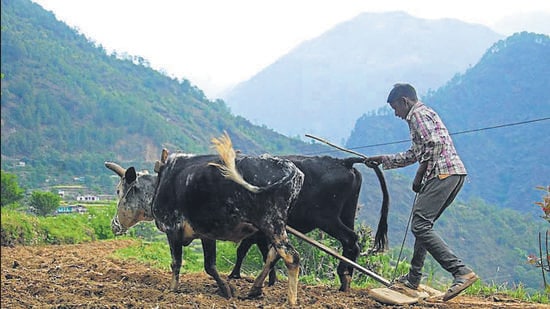India’s farm sector to sustain momentum, but that’s not enough
India’s farm sector is forecast to maintain its remarkable expansion in 2021-22 on the back of robust output and prices despite the coronavirus pandemic
India’s farm sector is forecast to maintain its remarkable expansion in 2021-22 on the back of robust output and prices despite the coronavirus pandemic. But that’s not enough to offset renewed pressure on growth in the gross domestic product (GDP) due to the shocks from a devastating second wave of Covid-19 infections, analysts say.

A prime reason for the farm sector’s resilience has been ample rains in the past two years. The India Meteorological Department on April 16 forecast that rainfall during the June-to-September monsoon season during 2021 will be 98%. In the past two decades, India has had normal rainfall for three straight years only twice. Rainfall between 94-106% is considered “normal”.
The monsoon is critical for summer crops because 60% of India’s net-sown area does not have access to irrigation and nearly half of Indians depend on a farm-based income.
In 2020, when a harsh Covid-19 lockdown stoked a countrywide recession, the agriculture sector showed resilience to register positive growth. It grew 3.4% in the June 2020 quarter, when the rest of the economy shrunk -24.4%.
All-India growth returned to positive territory in the December 2020 quarter, shows the latest available data, expanding 0.4%. Agriculture grew at 3.9% in the same quarter.
Millions of farmers have worked hard to keep agricultural operations going throughout the pandemic, aided by an exemption of the farm sector from Covid-related restrictions.
The pandemic has hit urban centres and smaller towns harder, relatively sparing farming activities in the countryside, another reason why the farm sector has outpaced other spheres of the economy.
Nearly half (48%) of all Covid-19 cases reported in India in March were from urban areas, home to just 14% of the population, with cities having the largest proportion of new infections since June 2020, according to an April 8 analysis by the HT.
“Ground-level indicators point to a robust farm sector. A normal monsoon will continue to see an expansion of the agriculture sector, aside from good encouraging prices and acreage trends,” said Abhishek Agrawal of Comtrade, an agricultural trading firm.
“In this kind of a situation, will agriculture be the sector to rescue the Indian economy? I will share some projections,” said a senior agriculture ministry official, requesting not to be quoted. Fertiliser demand, the official said, is expected to be 10% higher than usual in the oncoming summer or Kharif season. “We expect fertiliser demand to soar to 35 million tonnes from the usual 32 million tonnes,” the official said.
The government is anticipating higher demand for seeds, pesticides as well as farm equipment.
“A good agriculture year would mean at least 3-4% positive growth,” said RS Mani, a former faculty with the Tamil Nadu Agriculture University.
Better performance of the agriculture sector may bode well for the country’s more than 150 million farmers, yet that’s not enough – neither for farm incomes nor for the overall economy.
The GDP per worker in agriculture is one-third of the economy-wide GDP per worker. This means productivity in agriculture is too low to lift the overall economy.
The pandemic weighs heavily on other sectors of the economy. The second pandemic wave pummelled the labour market in April, erasing at least 7.35 million jobs, according to the latest data from the Centre for Monitoring Indian Economy.
The number of employees, both salaried and non-salaried, fell from 398.14 million in March to 390.79 million in April, the third straight month of job losses.
Agriculture employs half of all Indians but contributes a mere 15-16% to the country’s overall GDP. That simply means it employs too many people but contributes too little to incomes. Agriculture typically tends to move from one seasonal crisis to another.
Despite the farm sector being heavily subsidized, a landmark ICRIER-OECD (Indian Council for Research on International Economic Relations-Organisation for Economic Cooperation and Development) study in 2018 led by economist Ashok Gulati found that farmers suffered “negative market price support”.
Put simply, total prices farmers got during 2006-16 stood at minus 14%, meaning on average they paid more prices than they received. In other words, farming is a loss-making activity.
“The only feasible path to prosperity of farmers, therefore, is the creation of attractive job opportunities in industry and services,” writes economist Arvind Panagariya in his latest assessment of the Indian economy titled “India Unlimited”.
Yet, projections of sustained momentum in the farm economy come as good news because it will protect a large chunk of the economy from the worst impact of the pandemic that is sure to put pressure on growth, Mani said.
All Access.
One Subscription.
Get 360° coverage—from daily headlines
to 100 year archives.



HT App & Website







